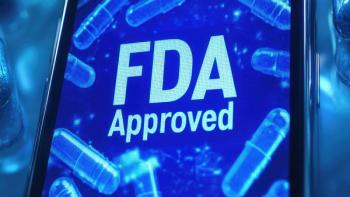
Why My ‘Normal’ Breast Now Feels Like a Liability
A breast cancer survivor who opted for a unilateral mastectomy advises people to look at all treatment and risk reduction options when first diagnosed with breast cancer so they can avoid any regrets years later.
Almost 10 years out from breast cancer treatment, which began with a unilateral mastectomy, my relationship with my remaining breast has changed. Now this lone breast feels out of sync. I frown at it as I do a self-exam in the shower or look in the mirror as I get dressed. As fortunate as I am to trust in regular screenings, and not need an aromatase inhibitor, this ostensibly healthy breast feels, sometimes, like the enemy. It has lost its charm.
What once gave me a sense of normalcy, one “normal” breast I could pamper with cancer screenings and clothe with soft fabrics, has made me wish I had undergone a contralateral prophylactic mastectomy. I worry that I will spend too many years of my life thinking about this breast, wondering when and if I will get cancer again. I do not think it is worth all the money poured into it either.
This new, surprising, attitude evolved after a recent MRI with dye contrast, a test that is ideal for screening my type of breast tissue but less ideal for my kidneys. It is also expensive. My follow-up plan has been to alternate mammograms with the MRI every now and then. As I look at my health holistically, though, I realize that the 3D mammogram as annual baseline may be better for my overall health. Will I continue the MRI? That is one more worry to contemplate.
When I was diagnosed with cancer, my team encouraged a unilateral mastectomy prior to other treatment. We never discussed the possibility of removing both breasts. I do not have the worrisome BRCA gene mutation. Following up with my surgeon later that same year, after I had time to get over my initial shock with all that was going on, I did ask why a “double mastectomy” had not been recommended. I was told it would have been an option had I been “younger.” I accepted that wisdom then.
Now, older, I believe “younger” is a relative word. Even for older women, not having one more chance to get breast cancer can lighten the load. My mother, for example, got a second cancer in her remaining breast in her late eighties. While a life has to wind down one way or the other, cancer mixed with late-stage dementia — or even a healthy brain — is daunting. Do I want to look forward to that along with worrying about all the monitoring?
Hindsight is 20-20. Now is not the time for me to make a case for a mastectomy. Therefore, I will work through my complicated new normal. I share my feelings here just to say that if you ever find yourself discussing options, ask about all options. As
For more news on cancer updates, research and education, don’t forget to




